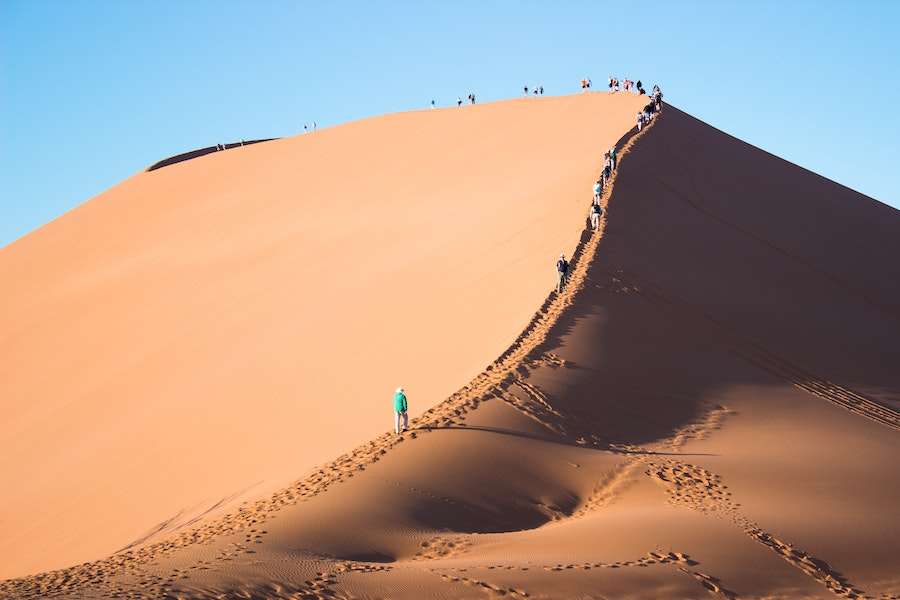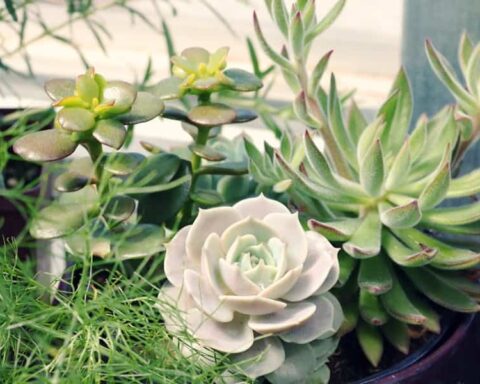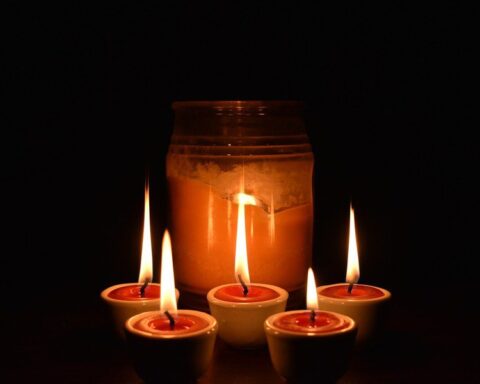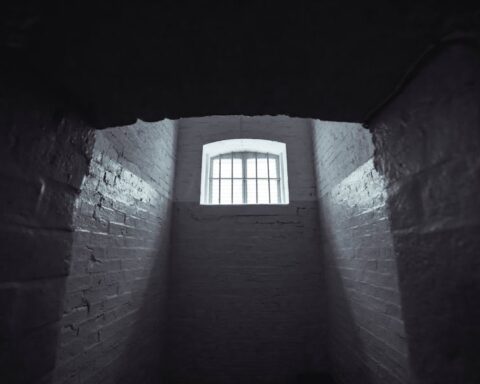Deserts are the driest places on Earth, with little rainfall and little vegetation. It’s hardly surprising that few people choose to live in deserts. But there are still millions of people who call them home – how is this possible? There are many different types of deserts scattered around the globe, each with its own unique characteristics and natural advantages. The presence of large numbers of people in these arid regions is a testament to human ingenuity rather than any inherent suitability for habitation. Let’s take a closer look at why people choose to live in deserts.
Why Do People Live In Deserts?
There are many reasons why people live in deserts. One is because of the climate and conditions that are present in deserts. Another is because they may have been forced to move there due to war or political unrest. Whatever the reason, living in a desert can be difficult since there are fewer available water and food resources. This means that life can be more challenging in a desert, so it’s important to take precautions and prepare for these conditions by storing water and food supplies.
Reasons Why People Live In Deserts
- Deserts are found in some of the most economically important regions of the world.
- Deserts can be very productive when irrigated by rivers or artificial means.
- Deserts may contain large amounts of valuable mineral resources, such as iron, copper, and salt.
- The climate in deserts can be quite pleasant at times, especially in mountainous areas where it is cooler than the surrounding lowlands.
- Some desert regions receive large amounts of rainfall during brief periods, which makes them ideal for agriculture during those times.
- The lack of water and vegetation keeps the temperature down in deserts, making them less hot than other flat lowland regions like tropical rainforests or savannas.
- Deserts often have a long history of human habitation and settlement because they are easier to cross than more formidable landscapes like jungles or mountainsides that are covered with thick vegetation and difficult to clear for cultivation or building cities and towns on top of them.
- Many deserts have historically been areas where people could live without interference from outside governments or states – this was especially true before the era of modern communications like radio, television, and the internet that could help spread information about grievances to other parts of society in distant places.
Arid Regions Are Generally Hot
1. Hot and Dry
People living in deserts have to deal with the heat all year round. Temperatures can range from freezing cold during the night to well over 40°C (104°F) during the day. This makes it extremely difficult for vegetation to grow, which means that food sources are scarce and water must be carefully conserved. The lack of plants also means that there is little shade available, which can make life difficult for people who struggle with the heat. However, hot temperatures are not necessarily a deterrent for everyone – some people enjoy hot weather!
2. Water is Scarce in Arid Regions
Deserts are also extremely dry places – water is scarce! Some deserts receive less than 100mm of rain each year, while other arid regions receive no rain at all. These conditions make it very difficult to grow crops or raise animals like cows or goats for milk and meat – without water, they will die before they reach maturity! People living in these regions have to be very careful about how they use their water supplies so that they don’t run out too soon.
3. Plants and Animals are Few
Deserts are also very dry places – water is scarce! Some deserts receive less than 100mm of rain each year, while other arid regions receive no rain at all. These conditions make it very difficult to grow crops or raise animals like cows or goats for milk and meat – without water, they will die before they reach maturity! People living in these regions have to be very careful about how they use their water supplies so that they don’t run out too soon. They may store their water underground in large pots called cisterns for use later on when it’s needed most – this technique has been used by desert-dwellers for thousands of years!
4. Plants and Animals are Few
Arid regions are generally hot and dry, with little rainfall or vegetation. They also have few plants or animals living there because of the difficulty of finding enough food and water to survive. However, some plants can live in deserts because they have adapted to harsh conditions – cacti are a good example of this! Cacti have adapted over time so that they can store water in their bodies for long periods of time without using it up. This means that cacti can grow even in areas with low rainfall levels where other plants would die from a lack of moisture. Cactus fruit is another example – these fruits contain lots of liquid which helps them survive until it rains again if you’ve ever eaten a prickly pear, you’ll know this to be true!
The Good News: Deserts Are Dry
1. Dry air is good for your health
Very dry air can be dangerous. The human body requires a certain amount of moisture in the air to function properly. Humans are not able to survive without water for more than a few days, but we can survive for weeks without food. Your body also needs oxygen, which it draws from the air. When the humidity level is too high, it becomes harder for you to breathe. This is why so many people suffer from respiratory problems when they move from dry climates to humid ones – their bodies are not used to breathing in such moist environments.
2. Dry soil means no diseases or poisonous plants
The lack of vegetation in arid regions means that there are very few parasites or dangerous animals living there. There are no snakes or scorpions and only very few species of venomous spiders and insects – all creatures that thrive best in humid conditions with plenty of plant life on which they can prey on other creatures and lay their eggs. Deserts also have very little bacteria – this means that there is less chance of contracting diseases like cholera and leptospirosis than would be found further inland where there is more plant matter around which bacteria can grow and spread disease among humans.
3. Dry soil means less erosion
Erosion is a natural process that can take place in any climate, but it is significantly more likely to occur in humid regions where there is abundant plant life and moisture in the air. In arid regions, there are few plants and very little moisture to cause erosion – this means that the desert is better equipped to deal with natural disasters like floods and earthquakes than regions with a lot of vegetation. It also means that desert communities have the chance to develop on stable ground without fear of their buildings being destroyed by floods or other natural disasters.
The Bad News: Deserts Are Harsh Environment
1. Hot and Dry
Deserts are hot, dry, and often windy. Temperatures can reach up to 50°C (122°F) during the day and plummet to below freezing at night. The average rainfall in deserts is between 30-50 mm per year, but there is no guarantee of this in any given year. The rainfall tends to come in the form of violent thunderstorms that cause flash floods, which can be fatal for anyone caught out in them.
2. Little Shelter
Deserts are vast areas with little vegetation or shelter. There are few trees or bushes – maybe only a few species of cacti – and very little shrubbery or grass (which would provide shade from the sun). Natural shelters like caves tend to be very deep underground, so people have to build their own shelters out of the elements either underground or above ground on top of raised platforms made from stone blocks. These types of buildings are called adobe huts.
3. Hot during the Day; Cold at Night
The temperatures in deserts vary wildly throughout the day and night because most desert regions lie close to the equator where there is little variation between summer and winter temperatures – they’re hot all year round! During the day you’ll find it uncomfortably hot outside, but at night it can get really cold; frost is common even well into spring or autumn.
4. Strong Wind
Winds can reach up to 60 miles per hour in some deserts. The wind is a particularly destructive force in deserts because it can cause sandstorms and dust storms. These storms can be so violent that they cause sand to whip up into the air and bury everything in their path. It’s not uncommon for a sandstorm to cover an area of land the size of Wales or even the whole of Great Britain!
Conclusion
Deserts are some of the most inhospitable places on Earth. However, they are also some of the most diverse ecosystems around. People have been living in deserts for thousands of years. They have learned to adapt to their environment to survive in the harshest of places. This is a testament to humanity. We are resourceful creatures with the ability to flourish in the most unlikely of places. When people choose to call a desert home, it is no surprise that they have learned to thrive in these hostile environments.










